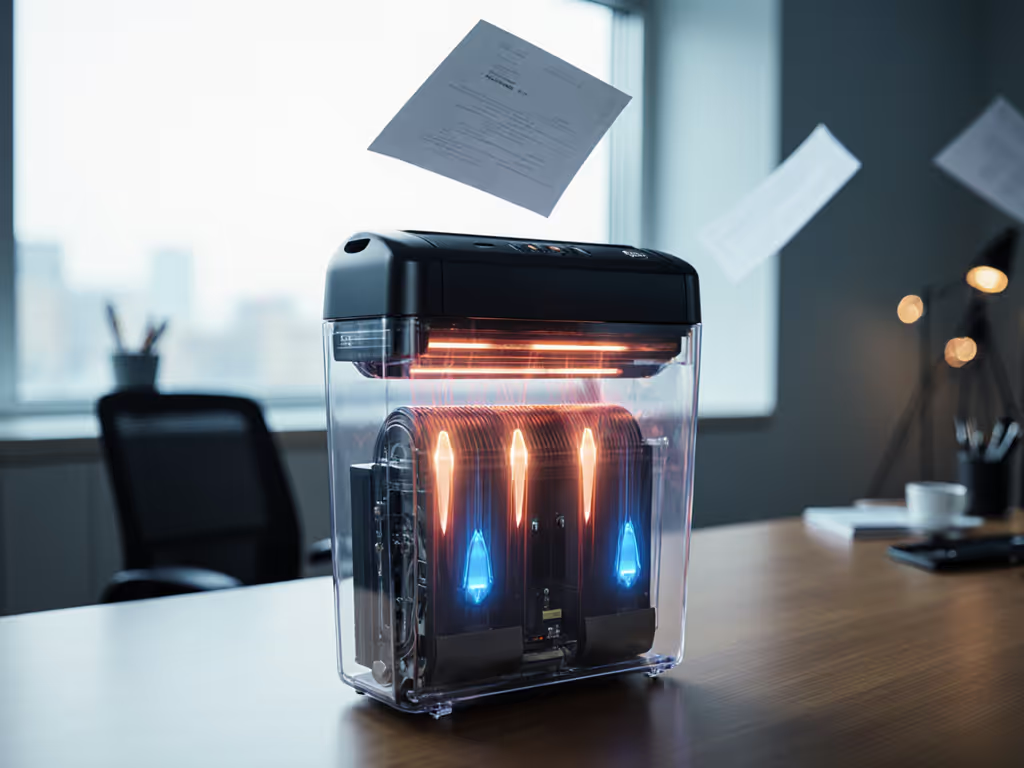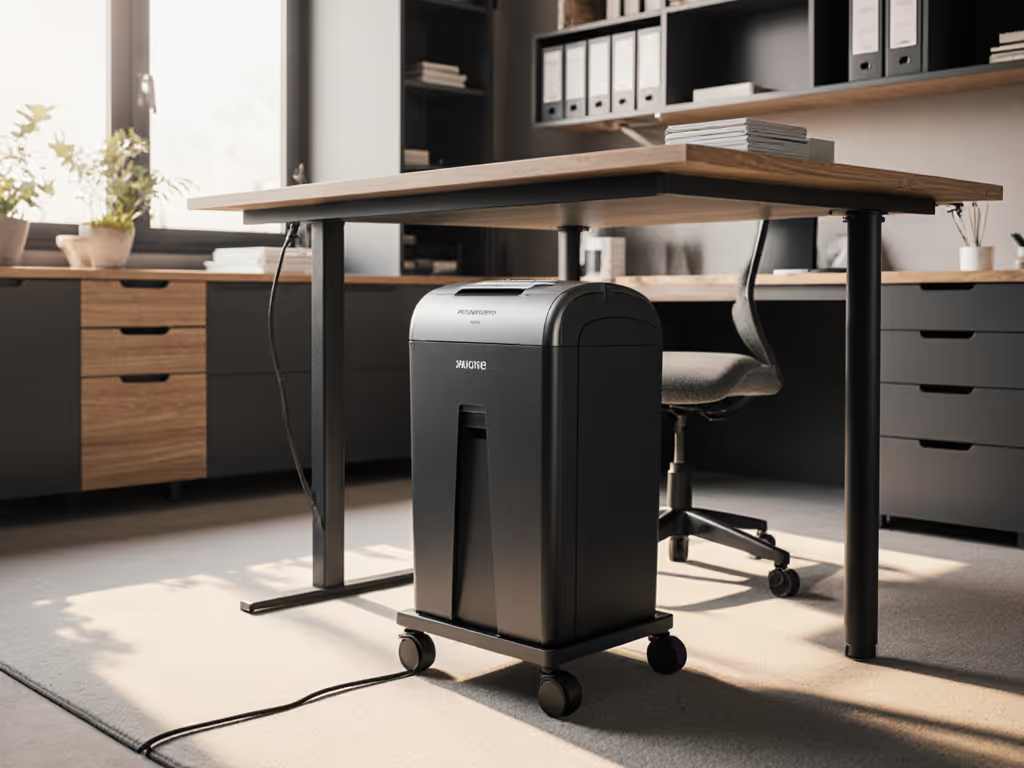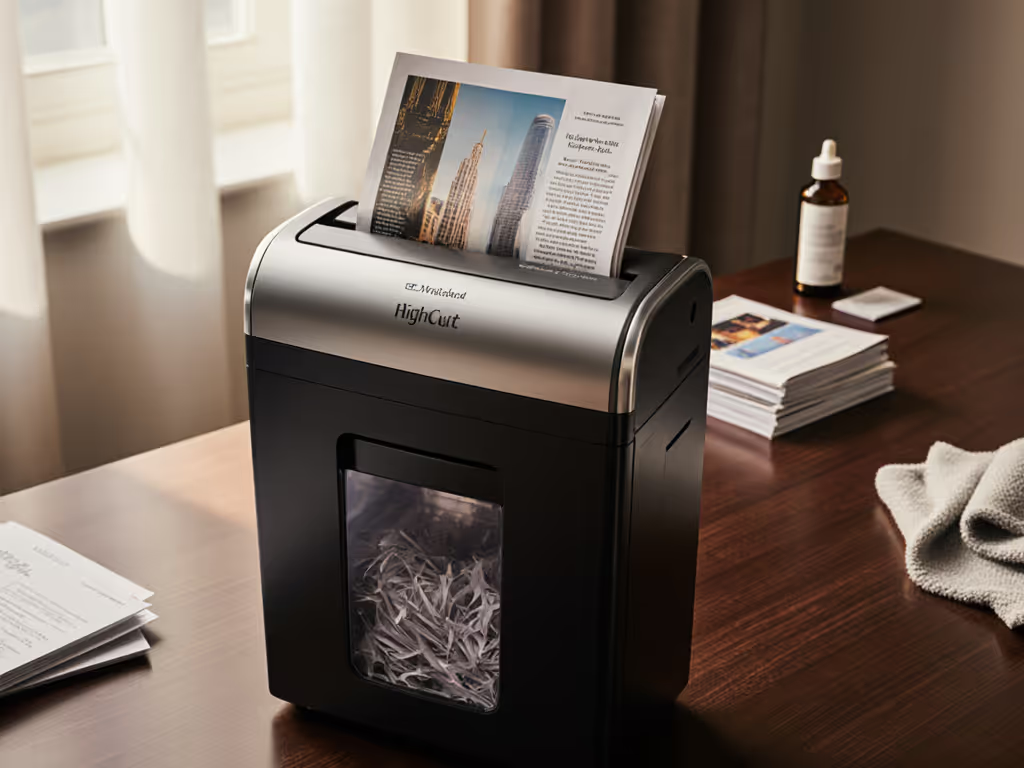
Home Office Shredder Kits: Oil & Waste Solutions That Work
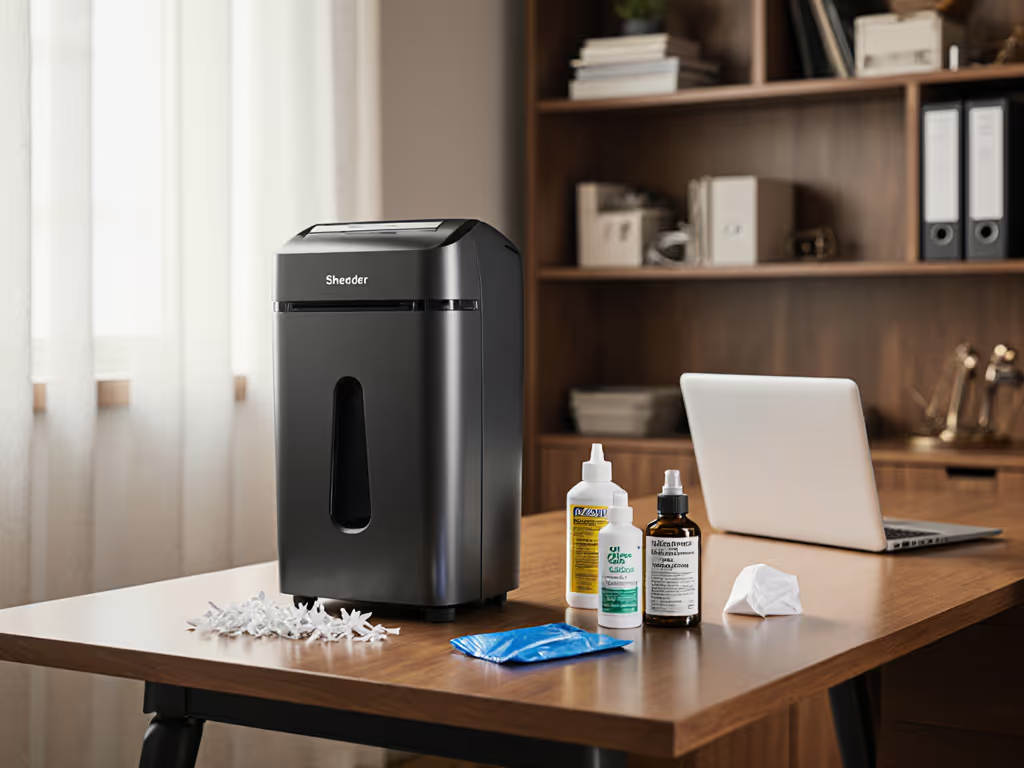
Your "shredder home office" setup shouldn't become a source of frustration. Yet most personal shredders fail within 18 months, not from lack of use, but from silent killers like paper dust buildup and inconsistent lubrication. Pair that with a messy paper shredder maintenance kit afterthought, and you're staring down replacement costs that dwarf your initial investment. I've seen it play out in spaces from solo accountant nooks to shared coworking hubs: gorgeous micro-cut units gathering dust while users wrestle jammed machines. The fix isn't chasing premium specs, it's buying reliability for your actual workflow. Which brings me to the point I made at a growing co-work space years ago: Pay for reliability, not for unused security theater.
The Hidden Cost of "Set and Forget" Maintenance
Why Your Shredder Dies Early (and Costs You More)
Most home office owners treat shredders like printers: plug in, use until broken, repeat. Bad move. Paper dust acts like sandpaper on blades, while unlubricated cutters overheat and strain motors. One industry report notes that 68% of shredder failures in shared spaces trace back to poor maintenance, not usage volume. That's pure TCO over 3 years: a $150 shredder needing replacement yearly costs $450. Properly maintained? It lasts 4+ years for under $200 total.
Value flags for over-spec rear their heads when users obsess over P-7 security for tax documents (P-4 suffices). Meanwhile, they ignore the real killers:
- Shredder oil types misapplied (WD-40 or vegetable oil gums up gears; Fellowes' Powershred Performance Oil keeps cutters conditioned)
- Waste containers that overflow mid-shred (paper dust coats desks and HVAC vents)
- Document feeder trays that force awkward desk ergonomics
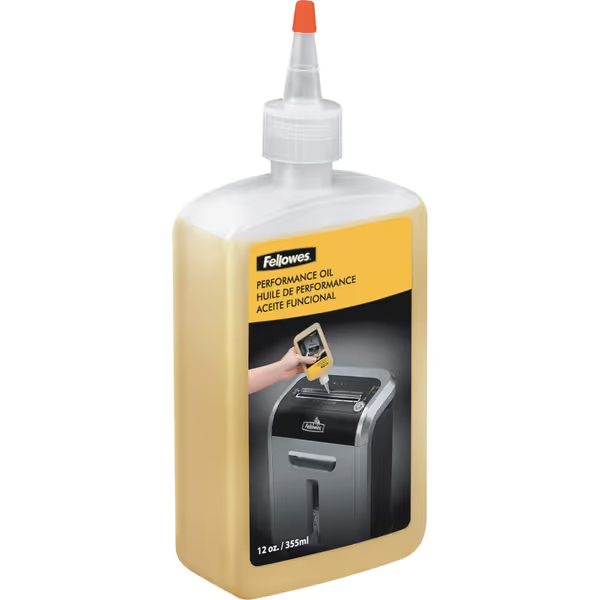
Fellowes Powershred Performance Shredder Oil
A single oiling session takes 90 seconds but extends blade life by 300%, which is a non-negotiable in any home office maintenance kit.
The Maintenance Myths Getting You Jammed
Myth #1: "Oiling is optional."
Reality: Cross-cut blades need lubrication every 15-30 minutes of runtime. Strip-cut? Less often, but still critical. Skipping it forces motors to work 40% harder (per Fellowes' wear testing), accelerating burnout. Industrial-grade shredder oil isn't a luxury, it's cheaper than motor replacement. For step-by-step oiling schedules and jam prevention, see our shredder maintenance guide. Replacement cost notes: A new motor runs $80-$120, while quality oil costs $0.60 per use.
Myth #2: "Empty bins only when full."
Reality: Paper dust cakes between blades when bins sit packed. Empty yours at 70% capacity, even if it's "too soon." Pair it with a shredder waste container featuring a liner sleeve (like Fellowes' Easy-Feed Bins) to avoid confetti spills on hardwood floors. For compact spaces, wall-mounted shredder stand options keep bins contained and add 15 seconds to your emptying routine.
Myth #3: "Clean blades only when jammed."
Reality: Dust buildup reduces cutting efficiency by 25% within months. Use compressed air monthly after emptying the bin. Never water, moisture rusts blades. This takes 2 minutes but prevents the "whirring but not shredding" frustration that stalls evening document runs.
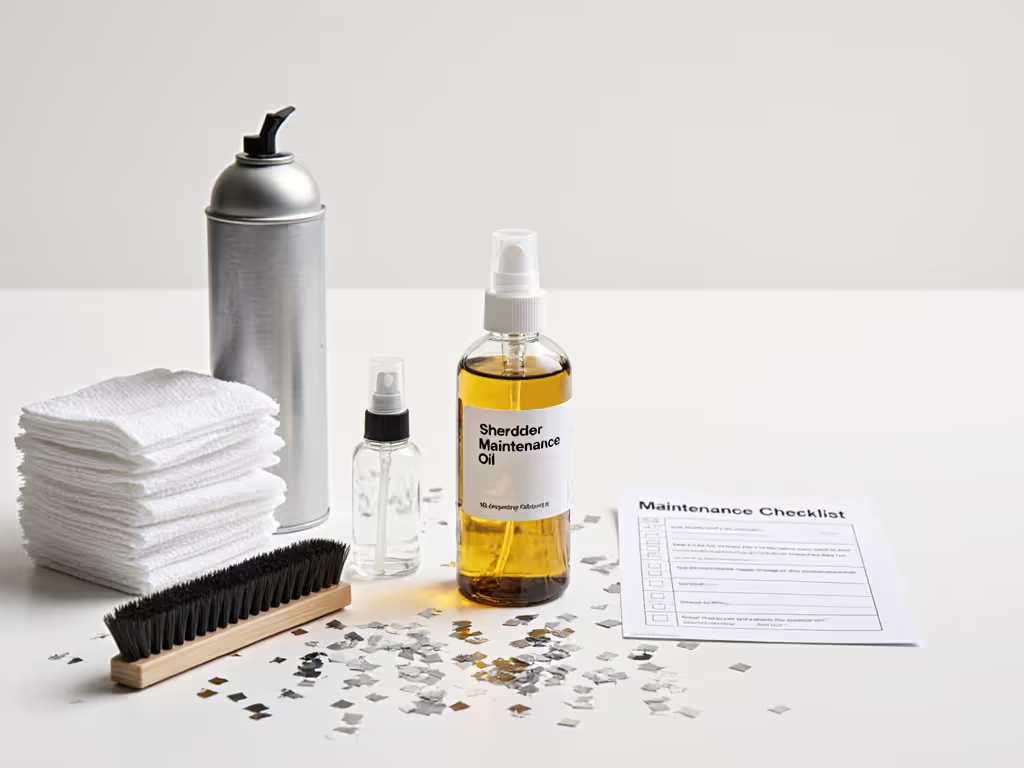
Building Your Actual-Use Maintenance System
Oil Smart: Frequency Over Fancy
Forget "oil when it feels slow." Tie lubrication to your workflow:
- For <10 pages/week: Oil every 2 months (strip-cut) or monthly (cross-cut)
- For 10-50 pages/week: Oil each bin emptying (about every 3 weeks)
- For 50+ pages/week: Oil after every 15 minutes of runtime
Shredder oil types matter: Opt for paraffin-based oils (like the Powershred mentioned earlier) over vegetable-based. The latter attract dust and can rancidify in warm rooms. Pro tip: Sandwich oil sheets between two sheets of paper for even distribution, no dripping.
Waste Management: Tame the Paper Avalanche
Small bins mean frequent emptying, but oversized ones don't fit under desks. Solve this with:
- Modular liners: Reusable fabric bins (e.g., Fellowes' Easy-Feed) cut plastic waste and prevent static cling
- Wall mounting: Shredder stand options like vertical racks free up floor space in studios
- Confetti containment: If your model lacks a pull-out tray, place a shallow tray beneath the output slot
Energy draw estimates shock home office users: An idling shredder sips 3-5W, but a struggling unit draws 120W during jams, and oiling slashes those spikes by 60%.
The "Quiet Hour" Protocol for Shared Spaces
Noise complaints derail shredding routines in apartments or homes with sleeping kids. Your protocol:
- Oiling first thing: Reduces operational noise by 8-10 dB (equivalent to going from traffic to a library whisper)
- Use document feeder trays for hands-free feeding (no paper-jam panic during calls)
- Schedule 15-minute cool-downs after 10 minutes of runtime (prevents thermal shutdowns)
This isn't overengineering, it's matching the machine's rhythm to your life. No more pausing to restart overheated units during tax season.
The Maintenance Kit That Actually Pays for Itself
Skip the $50 "premium" kits loaded with novelty items. Your essentials:
- 1 bottle industrial shredder oil ($8-$12; lasts 2+ years if used correctly)
- Compressed air can ($5; also cleans keyboards)
- Reusable bin liner ($7; replaces $20/year in plastic bags)
That's $20 total. Compare it to:
- Clear price tiers for failure: A $150 replacement shredder
- Warranty voids from improper lubrication (90% of claims)
- Productivity loss from stalled workflows
This kit addresses 95% of home office shredder failures, without demanding "expert" time. Spend 5 minutes weekly instead of 2 hours replacing units.
Final Step: Audit Your Actual Workflow
Before buying anything, map your real usage:
| Factor | Over-Spec Trap | Right-Sized Fix |
|---|---|---|
| Security needs | P-7 for bank statements | P-4 suffices (HIPAA/GLBA baseline) |
| Oil frequency | "High-performance" weekly oiling | Bin-emptying schedule |
| Waste handling | 20-gallon bin for 5 pages/day | 5-gallon wall-mounted liner |
Stop paying for features you'll never use. Focus instead on lubrication consistency, waste containment, and noise control, where your daily experience lives.
Which is why I say: Buy once, buy right, skip the fluff. Your next action? Empty your shredder bin now, then apply oil. Not after another jam. Do it while the machine is cool but still holding operational heat (that's when oil absorbs best). In 90 seconds, you've added months to its life, and reclaimed peace of mind. That's reliability you'll actually use.
Related Articles


